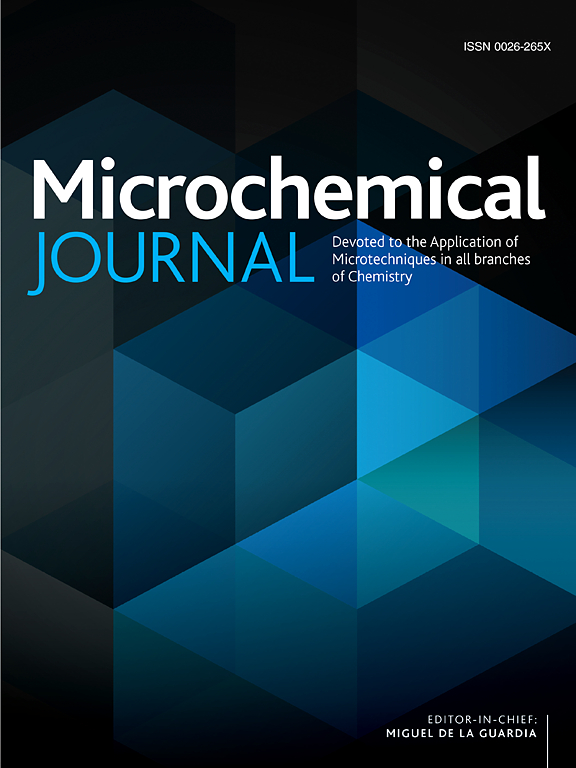Developing a solid-phase extraction method based on a novel polymer-silica composite for analysis of sulfonate genotoxic impurities in drugs
IF 4.9
2区 化学
Q1 CHEMISTRY, ANALYTICAL
引用次数: 0
Abstract
Genotoxic impurities (GTIs), which are present at very small amounts in drugs, can cause severe toxicity. The existence of GTIs poses a significant risk to patients, pharmaceutical companies, and regulatory agencies. Sulfonate compounds, as a typical genotoxic impurity, present a challenge in quantitative analysis because of their low concentration and instability. In this work, by a green, simple and low-cost preparation strategy, a novel polymer was modified on the surface of silica by the reaction of two monomers (1,5-dihydroxynaphthalene and 1,3,5-trimethylhexahydro-1,3,5-triazine). By systematically optimizing the ratio and concentration between the two polymeric monomers and silica, the resultant adsorbent labeled as S-D1T1/20 was obtained and showed outstanding adsorption performance for sulfonate. Mechanism studies revealed that there are effective hydrogen bond and π-π stacking interactions between S-D1T1/20 and sulfonate. For the partial sulfonates which are easy to hydrolyze, we proposed to detect the concentration of their hydrolyzed forms. By optimizing the loading and eluting conditions, an SPE-HPLC-DAD method with high sensitivity was developed for the quantitative enrichment and determination of six sulfonates with a wide linear range (0.01 ∼ 3μg mL−1), low limits of detection (5 ∼ 25 ng mL−1), satisfied inter-day precision, and intra-day precision. Last, this method was successfully applied to various species and forms of commercial drugs and achieved satisfied sulfonate recoveries (91.2 % ∼ 105.8 %). This work provides a unique solution to the frontier scientific problem of accurate determination of trace sulfonate genotoxic impurities in drugs, which is of great significance for ensuring drug quality and clinical safety.

求助全文
约1分钟内获得全文
求助全文
来源期刊

Microchemical Journal
化学-分析化学
CiteScore
8.70
自引率
8.30%
发文量
1131
审稿时长
1.9 months
期刊介绍:
The Microchemical Journal is a peer reviewed journal devoted to all aspects and phases of analytical chemistry and chemical analysis. The Microchemical Journal publishes articles which are at the forefront of modern analytical chemistry and cover innovations in the techniques to the finest possible limits. This includes fundamental aspects, instrumentation, new developments, innovative and novel methods and applications including environmental and clinical field.
Traditional classical analytical methods such as spectrophotometry and titrimetry as well as established instrumentation methods such as flame and graphite furnace atomic absorption spectrometry, gas chromatography, and modified glassy or carbon electrode electrochemical methods will be considered, provided they show significant improvements and novelty compared to the established methods.
 求助内容:
求助内容: 应助结果提醒方式:
应助结果提醒方式:


